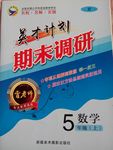题目内容
Drink drivers could be prohibited from driving under the influence if new technology from Nissan is introduced.
The Japanese car maker has developed a new odor (气味) detection system designed to prevent drivers from operating a car if they are over the legal limit. The system works by using a series of sensors (传感器) to detect the level of alcohol the driver has consumed.
A high-sensitivity alcohol odor sensor is built into the gear stick (变速杆), which is able to detect the presence of the driver’s palm as he or she attempts to start driving. If the alcohol level detected is above a pre-determined limit, the system automatically locks the transmission(变速器), immobilizing the car. A voice alert is also issued via the car navigation system telling the driver that he or she is over the limit.
Extra sensors are also placed in the driver and passenger seats and a warning is issued if these sensors detect the presence of alcohol in the air inside the vehicle cabin.
While still in the developmental stage the concept of drink driving detectors being built into cars has generally been welcomed by many drivers.
Nissan said the technology is part of a project aimed at halving the number of fatalities (灾祸) and serious injuries in Nissan cars by 2015 compared to 2005 levels.
1.The detection system works _______________.
|
A.by detecting the smell of alcohol in the vehicle cabin |
|
B.by measuring the volume of the alcohol in vehicle cabin |
|
C.by detecting the weight of the school in the vehicle cabin |
|
D.by using a car navigation system |
2.What do we know about the detection system?
|
A.The detection system is still in the developmental stage. |
|
B.The new technology from Nissan has been introduced. |
|
C.The driving detectors are being built into cars. |
|
D.The system has already been used in some car companies. |
3.The driver’s attitude toward the detection system is that of _______________.
|
A.annoyance |
B.welcome |
C.unconcern |
D.doubt |
4.What’s the main idea of the passage?
|
A.Nissan will release drink-proof cars. |
|
B.Traffic accidents will be decreased. |
|
C.A project halving the number of accidents. |
|
D.A new odor detection system. |
1.A
2.A
3.B
4.A
【解析】略

 名师点拨卷系列答案
名师点拨卷系列答案 英才计划期末调研系列答案
英才计划期末调研系列答案Long bus rides are like television shows. They have a beginning, a middle, and an end with commercials (商业广告) thrown in every three or four minutes. The commercials are unavoidable. They happen whether you want them or not. Every couple of minutes a billboard glides by outside the bus window. "Buy Super Clean Toothpaste. ""Drink Good Wet Root Beer." "Fill up with Pacific Gas." Only if you sleep, which is equal to turning the television set off, are you spared the unending cry of "You Need It! Buy It Now!"
The beginning of the ride is comfortable and somewhat exciting, even if you’ve traveled that way before. Usually some things have changed—new houses, new buildings, sometimes even a new road. The bus driver has a style of driving and it’s fun to try to figure it out the first hour or so. If the driver is particularly reckless (鲁莽的) or daring, the ride can be as thrilling (惊心动魄的) as a suspense story. Will the driver pass the truck in time? Will the driver move into the rightor the lefthand lane? After a while, of course, the excitement dies down. Sleeping for a while helps pass the middle hours of the ride. Food always makes bus rides more interesting. But you’ve got to be careful of what kind of food you eat. Too much salty food can make you very thirsty between stops.
The end of the ride is somewhat like the beginning. You know it will soon be over and there’s a kind of expectation and excitement in that. The seat of course, has become harder as the hours have passed. By now you’ve sat with your legs crossed, with your hands in your lap, with your hands on the armrests even with your hands crossed behind your head. The end comes just at no more ways to sit.
【小题1】According to the passage, what do the passengers usually see when they are on a long bus trip?
| A.Buses on the road. | B.Films on television. |
| C.Advertisements on the billboards. | D.Gas stations. |
| A.To give the writer’s opinion about long bus trips. |
| B.To persuade you to take a long bus trip. |
| C.To explain how bus trips and television shows differ. |
| D.To describe the billboards along the road. |
| A.the commercials both on TV shows and on billboards along the road are fun |
| B.they both have a beginning, a middle, and an end, with commercials in between |
| C.the drivers are always reckless on TV shows just as they are on buses |
| D.both traveling and watching TV are not exciting. |
| A.exciting | B.comfortable | C.tiring | D.boring |